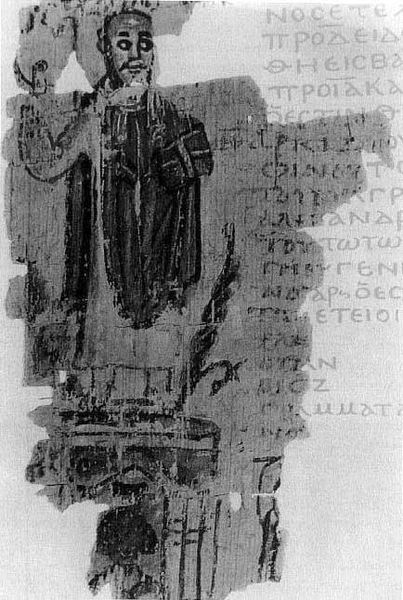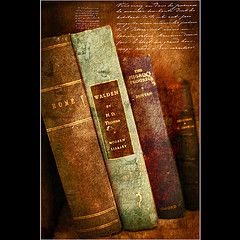4. Further practice
Hardly ever has Paco read about this fantastic library. So, he decides to sit down in a comfortable armchair next to a window and goes on reading about the Library of Alexandria.
A research institution1
No sooner was the Letter of Aristeas discovered than scholars knew the library of Alexandria had initially been organized by Demetrius of Phaleron, a student of Aristotle, under the reign of Ptolemy Soter.
 |
| By Gene.arboit. Public domain |
Built in the style of Aristotle's Lyceum, in service of the Musaeum (a Greek Temple or "House of Muses", hence the term "museum"), not only did the library consist of a reading room, lecture halls and meeting rooms, but also gardens, and a room for shared dining. However, the exact layout is not known. This model's influence may still be seen today in the layout of university campuses. The library itself is known to have had an acquisitions department, and a cataloguing department. The hall contained shelves for the collections of scrolls (as the books were at this time on papyrus scrolls), known as bibliothekai (βιβλιοθῆκαι). It was rumored that had you looked at the wall above the shelves, a famous inscription could have been read: The place of the cure of the soul.
The first known library of its kind to gather a serious collection of books from beyond its country's borders, the Library at Alexandria was charged with collecting all the world's knowledge. It did so through an aggressive and well-funded royal mandate which involved trips to the book fairs of Rhodes and Athens. They hung on to the original texts and made copies to send back to their owners. This detail is informed by the fact that Alexandria welcomed trade from the East and West, and soon found itself the international hub for trade, as well as the leading producer of papyrus and, soon enough, books.
Not only did the library collect books from the past, it was also home to a host of international scholars, well-patronized by the Ptolemaic dynasty with travel, lodging and stipends for their whole families. As a research institution, the library filled its stacks with new works in mathematics, astronomy, physics, natural sciences and other subjects. It was at the Library of Alexandria that the scientific method was first conceived and put into practice, and its empirical standards applied in one of the first and certainly strongest homes for serious textual criticism. As the same text often existed in several different versions, comparative textual criticism was crucial for ensuring their veracity. Once ascertained, canonical copies would then be made for scholars, royalty and wealthy bibliophiles the world over, this commerce bringing about income to the library.
1 Adapted from Wikipedia.org
Read and listen to the text carefully. Answer the following questions:
1. According to the text, where does the word "museum" come from?
2. Why can the model of the Library of Alexandria be seen in university campuses nowadays?
3. According to the texts, why did so many scholars go to live in Alexandria?
 |
| Imagen: Creación Propia |
Identify them and say why they do not follow that structure.
There is something odd in the following sentence from the text: 'They hung on to the original texts...' Can you guess?
Write the following sentence in the forms and tenses asked in the chart: "The hall contained shelves for the collections of scrolls."

|
| Imagen: Creación Propia |
| Tense and form | Answer |
| Negative interrogative | |
| Negative |
|
| Interrogative of the Present Perfect | |
| Negative of the Present Simple | |
| Interrogative of the Future |
